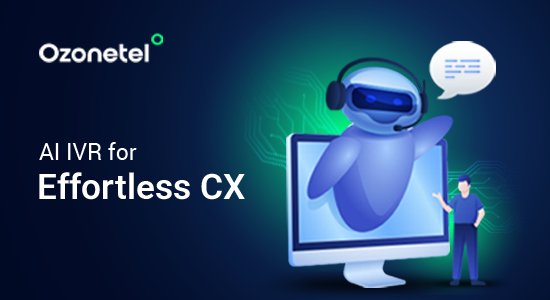- Resources
- How to Build a Customer-Focused Company: Strategies and Examples
How to Build a Customer-Focused Company: Strategies and Examples

Customer focus is one of the most important aspects of any successful business strategy today. Yet, it’s something that many companies fail to invest enough time and resources into. Why is that?
To understand why customer focus should be a priority, it’s important to recognize the power of understanding customer needs and wants. When you know what your customers are looking for—the challenges they face, the solutions they’re seeking and the goals they have—you can craft strategies that directly address their needs.
This article expands on what customer focus is, why it’s important, and how you can it to your advantage as a business leader.
In this article, we will explore:
- 1. What is Customer Focus?
- 2. Customer Focus vs. Customer Centricity
- 3. The Importance of Customer Focus
- 4. Strategies to Build a Customer-Focused Organization
- 5. Examples of a Customer-Focused Company
- 6. Strengthening Your Customer Service Team
- 7. Build a Customer-Focused Company With Cloud-Based Solutions
What is Customer Focus?
Customer focus is an approach to business that puts customers at the center of all decision-making. It’s about understanding customer needs, delivering on expectations, and building relationships across touchpoints to drive loyalty. Companies that prioritize customer focus are able to create a culture of service and satisfaction, ensuring customers come back time and again.
The goal of customer focus is to ensure that customers are satisfied with the products or services they receive and to make sure that their needs and wishes are taken into account when decisions are made. Ultimately, a customer-focused business will be better equipped to meet customer needs, build loyalty and trust with customers, and increase its profits over time.
Customer focus requires businesses to look beyond simply fulfilling their bare responsibilities to consumers. It’s a concerted effort to expand the relationship beyond transactional activities and be proactive in taking steps to improve experiences on a holistic level.
While things may start on the planning side, customer focus needs to reach out across the entire company. Sales and marketing teams need to understand what customers want and how they respond to various offerings in order for those departments to tailor their messages specifically. In this way, customer focus is not just an organizational goal, but rather an entire shift of culture.
Customer Focus vs. Customer Centricity: What’s the Difference?
If you’ve done some research into the customer experience before, chances are that you’ve heard of customer centricity. Customer focus and customer centricity are often used interchangeably, but there is a subtle difference.
| Aspects | Customer Focus | Customer Centricity |
|---|---|---|
| Definition | Internally focused activities understanding customer needs | Proactive shaping and modifying of products to align with customer needs |
| Orientation | Inward-looking, understanding without necessarily changing offerings | Outward-looking, actively shaping products and services |
| Empathy and Understanding | Essential for thinking from the customer’s point of view | Translates empathy into agile modifications based on feedback |
| Decision-Making Process | Informs decisions, keeping customers at the heart | Drives all-in decision-making, determining everything the organization does |
| Product and Service Alignment | Focuses on understanding preferences without major changes | Actively modifies offerings to align seamlessly with customer needs |
| Response to Feedback | Acknowledges customer input but may not translate into action | Swiftly responds to feedback, anticipating future wants and needs |
| Competitive Advantage | Contributes to a customer-centric approach, though not all-encompassing | Establishes a competitive edge by aligning offerings closely with customer expectations |
| Role in Customer Satisfaction | Important for understanding needs but may not drive significant changes | Integral to creating a satisfying customer experience, driving continual improvements |
The best way to separate the two is to consider customer centricity an all-in decision-making process. It determines everything an organization does, whereas customer focus simply informs the process. It is important to understand and use both approaches when striving for customer satisfaction.
The Importance of Customer Focus

Some might find it counterintuitive to invest time and effort into understanding customers considering the fact that people are often unpredictable and their behaviors ever-changing. Wouldn’t precious resources be better spent on developing products or scaling marketing endeavors?
The answer is no. Customer focus is essential to achieving long-term success for any business. Understanding customer preferences and expectations helps organizations create products that are tailored to their needs, while also providing valuable insight into how a company can differentiate itself from its competitors.
It can almost be thought of as a prerequisite to effective spending on product development and marketing as the better you know how to sell to someone, the easier and more cost-effective it will be to get them to actually purchase your product.
Customer focus increases customer satisfaction in a business landscape where everyone has something great to offer. Sometimes, it’s something as small as a great customer service experience that makes buyers want to keep coming back.
Customer focus also helps companies stay ahead of their markets by identifying potential opportunities or problems before they become bigger issues. There’s arguably no better way to gain a competitive advantage and maintain an edge than to know exactly what your customers want and need.
Strategies to Build a Customer-Focused Organization

Unfortunately, focusing on customers in a meaningful way, at least on an organizational level, takes work. It’s not as easy as flipping on a light switch or simply acknowledging the importance of customer service. To build a truly customer-focused culture, businesses must commit to certain strategies and philosophies that make it clear that customers are the priority.
Here are a few tips and strategies to help you get started:
Know Your Customer
Knowing your customer is a seemingly obvious yet often overlooked aspect of implementing a strong customer-focus strategy. You can’t meet people where they are without first understanding who they are or what drives their purchasing decisions. Why do customers choose to buy from you? What are their pain points? What do they hope to get out of the products and services you provide?
By asking targeted questions, conducting surveys, and reviewing customer demographics information collected from social media channels or online store analytics platforms, you can gain valuable insights into who makes up your customer base and what drives their decisions.
From there, it becomes much easier to come up with a customer-focused strategy that meets target buyers’ needs and appeals to them. Just be sure to get information from places that are reliable and truly representative of your customer base. First-party sources such as sales data and surveys are preferred, but you can also use third-party sources such as industry reports to gain an understanding of who your customers are.
Empower Teams’ Access to Information
This next point goes hand-in-hand with knowing your customer. That’s the first step – obtaining as much insight into who they are and why they buy so as to meet their needs as effectively as possible. The second part, which is equally important, is to ensure that everyone on your team has access to this knowledge.
Having customer information readily available means anyone who interacts with customers – from sales reps and marketers to customer service and product teams – can make decisions based on what’s best for the customer.
Developing a centralized hub where everyone can access and share information is an effective way to do this. Not only will it help foster better collaboration between teams, but it will make sure customers are getting consistent, quality experiences across the board.
Create a Seamless Customer Journey
The customer journey refers to the different touchpoints that a customer has with your brand as they move from being aware of it to making a purchase decision and beyond. It’s important to ensure that these touchpoints are seamless and consistent, so customers have a positive experience from start to finish.
This means everything from the look and feel of your website or app, the tone of voice used in written communication, customer service policies, and more should be carefully considered and aligned with the customer’s needs. A unified customer journey can help build trust between you and your customers, which leads to higher engagement rates.
Personalize Your Customers’ Experiences
Personalization is key to providing customers with a memorable experience. Leverage data such as customer purchase history, website behavior, and the number of times they’ve interacted with your brand to create personalized messages or offers tailored specifically for each individual.
Digital marketing tools like web analytics and AI-powered chatbots can help you gather customer data and create automated personalized experiences. You can also use this data to personalize email campaigns, product recommendations, discounts, or other promotions.
Leverage Feedback
Business and marketing leaders are prone to endlessly wonder what it is that their target customers actually want and need. Data can certainly provide hints as to who they are, but it doesn’t provide the whole picture. If only there was a way to get input from customers themselves – oh wait, there is.
Feedback is a very valuable tool for understanding customers better. You can ask questions in person, on the phone, or even online to gain insight into customers’ habits and preferences, both for the products and services they already own as well as what might interest them in the future. For example, you might ask questions about how they are using a product or how they feel about certain features.
It’s important to remember to keep things two-sided when seeking feedback. Unless they’re being offered a special discount or reward for sharing their opinion, the people who inform your surveys will be taking time out of their day to help you improve your business. Their belief in its potential and loyalty are what make the dream possible. Input should be both respectfully received and responded to with the same level of consideration.
Negative feedback may be hard to take at first, but it’s arguably the most valuable kind when it comes to customer-focused planning. It gives you an insight into what people don’t like about a product or service while identifying opportunities for improvement.
Fortunately, there are plenty of tools out there to help you manage customer feedback in a streamlined way and ensure that all suggestions get the attention they deserve. For example, using an online customer relationship management (CRM) platform with customer feedback management tools will enable you to prioritize and manage customer complaints or inquiries.
Tap Into Technology
We alluded to this a bit before, but it’s worth fleshing out further for the significance it holds in creating an organization that’s not only focused on its customers but also efficient in serving their needs. The idea of tailoring experiences to buyers is something that businesses have tried to use for decades, albeit in a much more manual fashion.
Now, with the advancements in technology, companies can leverage customer feedback data to predict and personalize experiences for buyers on an unprecedented level. CRM systems are built for the very purpose of streamlining customer feedback management and come with powerful features such as data analysis, workflow optimization, and customer segmentation that can further equip businesses to provide better experiences.
Chatbots are another great example of the implementation of technology in pursuit of customer satisfaction. Powered by Artificial Intelligence, these tools have the capacity to fulfill a variety of common requests on the spot. Users simply indicate what they need help with and the chatbot responds with an appropriate action. The process is faster than any human-led customer service team could ever hope to be, allowing businesses to take on a higher volume of customers and inquiries with less of a strain on resources.
Game-changing capabilities aside, what’s perhaps the greatest thing about today’s abundance of customer focus enabling technology is that it’s incredibly easy to access.
With intuitive UI/UX design and a plethora of customization options available, companies don’t have to worry about the steep learning curve that came with adopting new tools 15 years ago. Customer service software and related tools are also much more cost-effective than they used to be, opening the door for organizations of all sizes to take advantage of the power that technology offers.
Examples of a Customer-Focused Company
Customer focus is an essential practice for any business that wants to establish itself as a leader in its industry and ensure sustained growth.
Acko: Acko is an emerging insurtech firm that understood that customers go through varying emotions when they need interactions related to insurance such as claim settlements, roadside assistance, and other policy-related queries. They leveraged Ozonetel’s self-service IVR solution to automate a wide range of requests — policy endorsements, changes, renewals, and more — quickly and without any agent intervention. Additionally, Freshdesk Integration provided agents with relevant context beforehand helping them offer quick resolutions.
Muthoot Gold: Muthoot Gold has deployed Ozonetel’s CCaaS Platform for WhatsApp, voice bots, and other customer engagement technologies to build awareness and create positive engagement in a lean, agile, and cost-effective manner. With WhatsApp business solutions, Muthoot could now continually update consumers on new designs without retail stores or printed catalogs. This meant near-zero inventory costs, easy catalog distribution, and high engagement. They continually analyze this customer data to segment their user base and run personalized campaigns across digital channels. .
BigBasket: Online grocery firm BigBasket exemplifies customer focus by prioritizing quick and efficient service. With a commitment to answering over 95% of calls within 10 seconds, they go the extra mile for their customers. The use of skill prioritization ensures VIP calls receive even faster responses, showcasing a dedication to personalized customer care. By reducing Average Handle Time from 5 to 3.5 minutes, BigBasket not only values customers’ time but also enhances the overall shopping experience, making them a standout in customer-focused practices.
ClearTax: ClearTax emphasizes customer-centricity by streamlining processes. Previously, agents spent considerable time on manual calls and CDR management. The Ozonetel-LeadSquared integration now automates workflows, reducing the first-contact time frame to 10 minutes for customers and 15 minutes for marketing leads. This enhances ClearTax’s customer focus, delivering an improved experience.
Redcliffe Labs: Redcliffe Labs strongly commits to customer focus with Ozonetel’s unified CX platform. Resolving 70% of customer queries through self-service IVR prioritizes efficiency. Intelligent routing ensures leads reach the right healthcare advisor, emphasizing personalized interactions. The notable decrease in call queues, prompt support, and higher Net Promoter Score (NPS) highlight their dedication to creating a positive and customer-centric healthcare experience.
Strengthening Your Customer Service Team to Support Company-Wide Customer Focus
It should go without saying that customer service teams play a big role in customer-focused businesses. They’re often the very first people that potential customers interact with and they set the tone for how their experience will be.
Having a customer service team that is knowledgeable, friendly, and responsive can make all the difference in how customers perceive your brand. It could turn an unhappy customer into a satisfied one or even lead to more sales down the road.
The most effective customer service teams are those that have invested in their own growth. These teams spend time developing their understanding of the company, its products and services, as well as refining best practices for customer interaction.
It’s beneficial to provide customer service team members with ongoing training, guidance, and feedback so that they can do their jobs as efficiently and effectively as possible. It’s likewise important to provide them with the resources and support they need to help customers in real-time and address their issues.
There’s no better way to do that than with cloud-based call center software.
Build a Customer-Focused Company With Cloud-Based Solutions
Cloud-based run directly from the internet and are accessible anytime and anywhere with a reliable connection. They provide customer service teams with a central hub through which incoming and outcoming calls, lead progress and order status can be managed in real time.
Some tools come with more advanced features such as automated bots to handle basic customer inquiries, sentiment analysis to detect the emotional tone of interactions, and live chat capabilities.
The right cloud-based call center solution can drastically improve an organization’s ability to both focus on and serve the needs of its customers on an ongoing basis. It’s an upfront investment, sure. But there’s no doubt that it pays off in spades.
Ozonetel is a leading name in cloud-based call center software. Our solutions empower businesses in competitive industries to capture valuable insights about their customers and make better decisions that lead to improved customer satisfaction. With a breadth of products and services designed to meet the demands of any organization, Ozonetel makes it easy for businesses to bring their customer service operations into the digital age.
Learn more about our tech-savvy solutions by reaching out to a member of the team today.
Want to see what Ozonetel can do for your company? Sign up today for a free 21-day trial.
Frequently Asked Questions
Technology plays a key role in customer focus by providing businesses with the tools they need to better understand their customers and deliver personalized experiences. For example, businesses can use data and analytics to gain insights into their customers’ behavior and preferences, and use this information to tailor their products and services to meet their needs.
Some common mistakes businesses make include failing to listen to their customers, not investing enough in customer service, and not using customer feedback to drive business decisions. It’s important to avoid these mistakes if you want to build a customer-focused culture.
You can create a customer-centric culture in your business by setting clear goals and expectations, training your employees to focus on the customer, and rewarding customer-focused behavior. You can also use data and analytics to gain insights into your customers’ behavior and preferences.
The benefits of customer focus include increased customer satisfaction, improved customer loyalty, and higher revenue. It also helps businesses stay competitive in a crowded marketplace.
You can measure customer focus by tracking metrics such as customer satisfaction, customer retention, and customer lifetime value. You can also use surveys and other feedback mechanisms to gain insights into your customers’ needs and preferences.
Prashanth Kancherla
Chief Operating Officer, Ozonetel Communications
Over the past decade, Prashanth has worked with 3000+ customer experience and contact center leaders...
Chief Operating Officer, Ozonetel Communications
Over the past decade, Prashanth has worked with 3000+ customer experience and contact center leaders to comprehensively understand the need for effective and efficient customer communications at every step of their journey with a brand. Deeply embedded in today’s CCaaS ecosystem, he has been instrumental in Ozonetel's growth and contributed in various roles including product management, sales, and solution architecture.







